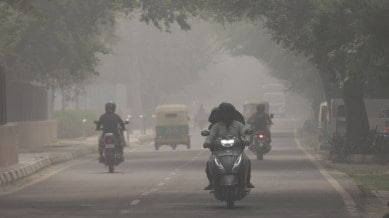Stay updated with the latest - Click here to follow us on Instagram
Mumbai wakes up to clear skies in a rare occurrence post Diwali eve; Amongst cleanest after Diwali in the past 3 years
According to the India Meteorological Department, Mumbai is in for extended relief from poor air as the region is likely to see showers over the next few days.

In a rare occurrence post Diwali, the city woke up to clear skies on Wednesday as unseasonal showers swept Mumbai and its neighbouring districts on Tuesday evening, spurring a dip in Air Quality Index (AQI) levels and clearing the smog.
The rain significantly brought down the AQI to 134 (moderate) on Wednesday – from 212 (poor) on Tuesday. For perspective, a day after last year’s Diwali– which was celebrated on November 2 – the city’s overall air quality touched 208, while improving marginally to 154 two days later. In 2023, Diwali was celebrated on November 13, following which the AQI deteriorated to 245, before improving to 126 the following day.
monthly limit of free stories.
with an Express account.
An AQI reading between 0 and 50 is regarded as ‘good’, 51-100 is ‘satisfactory’ (green), 101-200 is ‘moderate’ (yellow), 201-300 is considered to be ‘poor’ (orange), 301-400 is ‘very poor’ (red) and above 400 the AQI is ‘severe’ (maroon).
According to the India Meteorological Department (IMD), Mumbai is in for extended relief from poor air as the region is likely to experience rain activity for the next few days until Saturday at least.
Since the withdrawal of the monsoon on October 10, Mumbai’s air quality had been on a downward spiral with the overall AQI deteriorating from ‘satisfactory’ (below 100) to ‘moderate’ (100-200). It further plummeted on Tuesday morning when the overall AQI slipped into the ‘poor’ category at 212, the city’s worst since the monsoon withdrawal. Large-scale bursting of crackers and slow wind speed associated with winter months is believed to the worsened the AQI.
In a relief for the smog-laden city, heavy rainfall, thunderstorms and gusty winds swept several pockets as well as the neighbouring districts of Navi Mumbai and Thane. Data from the Brihanmumbai Municipal Corporation’s (BMC) automatic weather stations showed that between 6 pm and 7 pm on Tuesday, the heaviest rain was recorded in Dharavi at 19 mm, followed by 16 mm in Pratiksha Nagar, 15 mm in Chembur, 11 mm in Powai, and 10 mm in Dadar and Goregaon.
With the rain settling down the pollutants suspended in the air, the air quality improved significantly on Wednesday morning, a day after the Diwali festivities which continued till Tuesday. At least 10 of the 28 monitoring stations in Mumbai logged ‘satisfactory’ air under 100. In contrast, a day earlier, 10 stations had logged ‘poor’ AQI (over 200) while at least three pockets of the city – BKC, Colaba and Mazgaon – saw ‘very poor’ AQI in the red category (300-400).